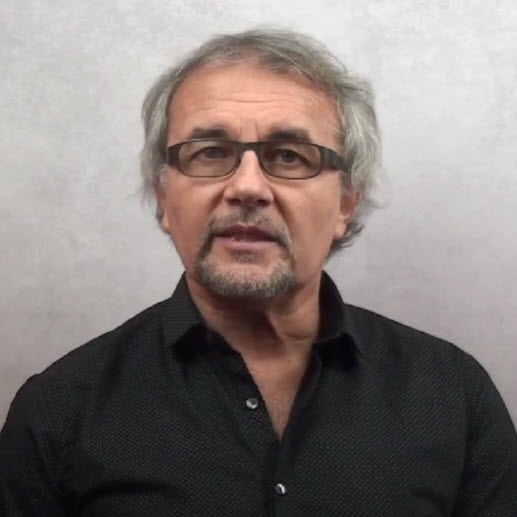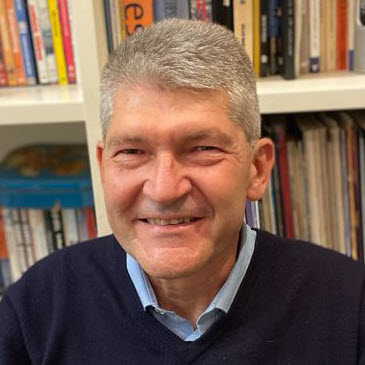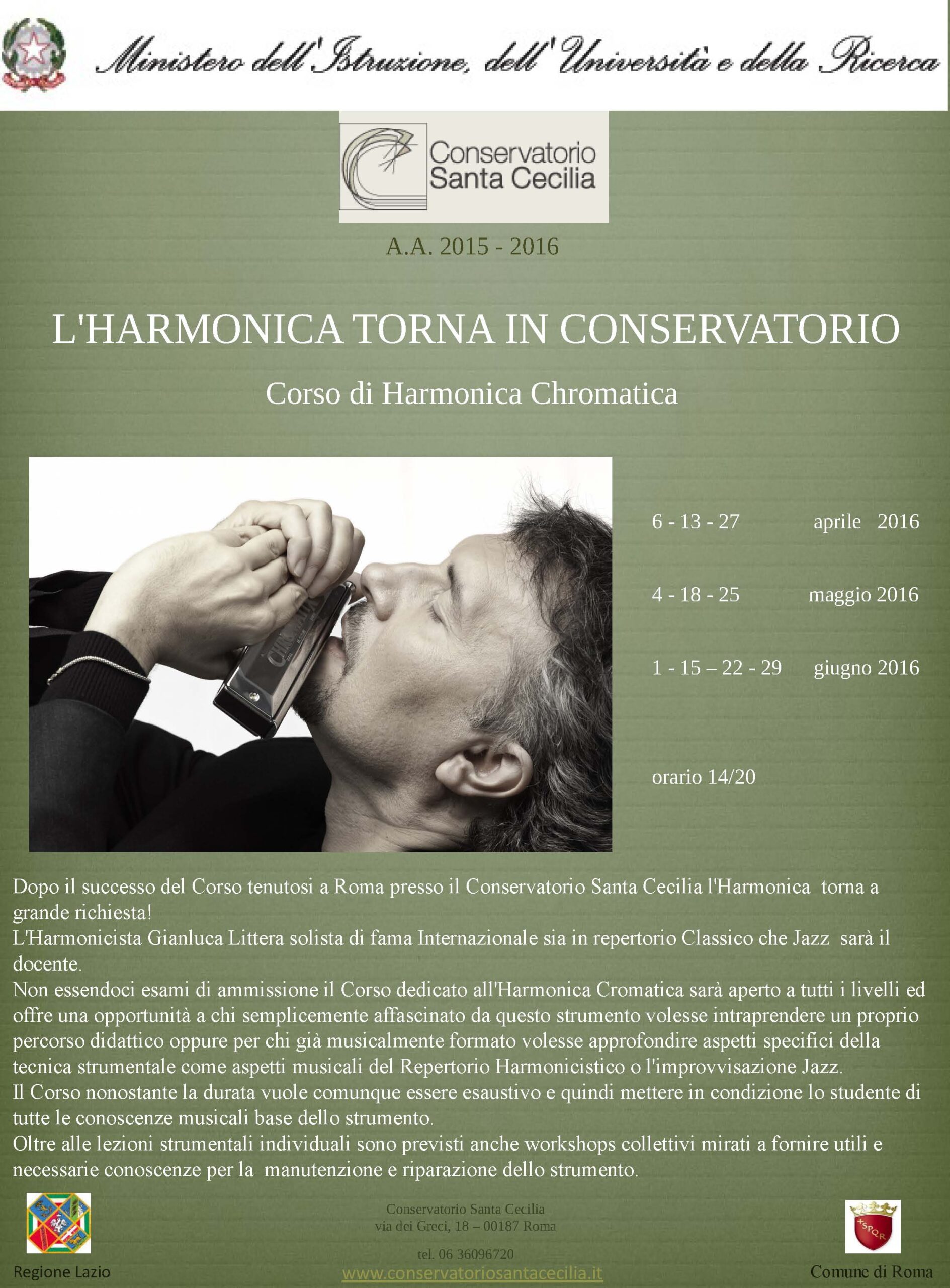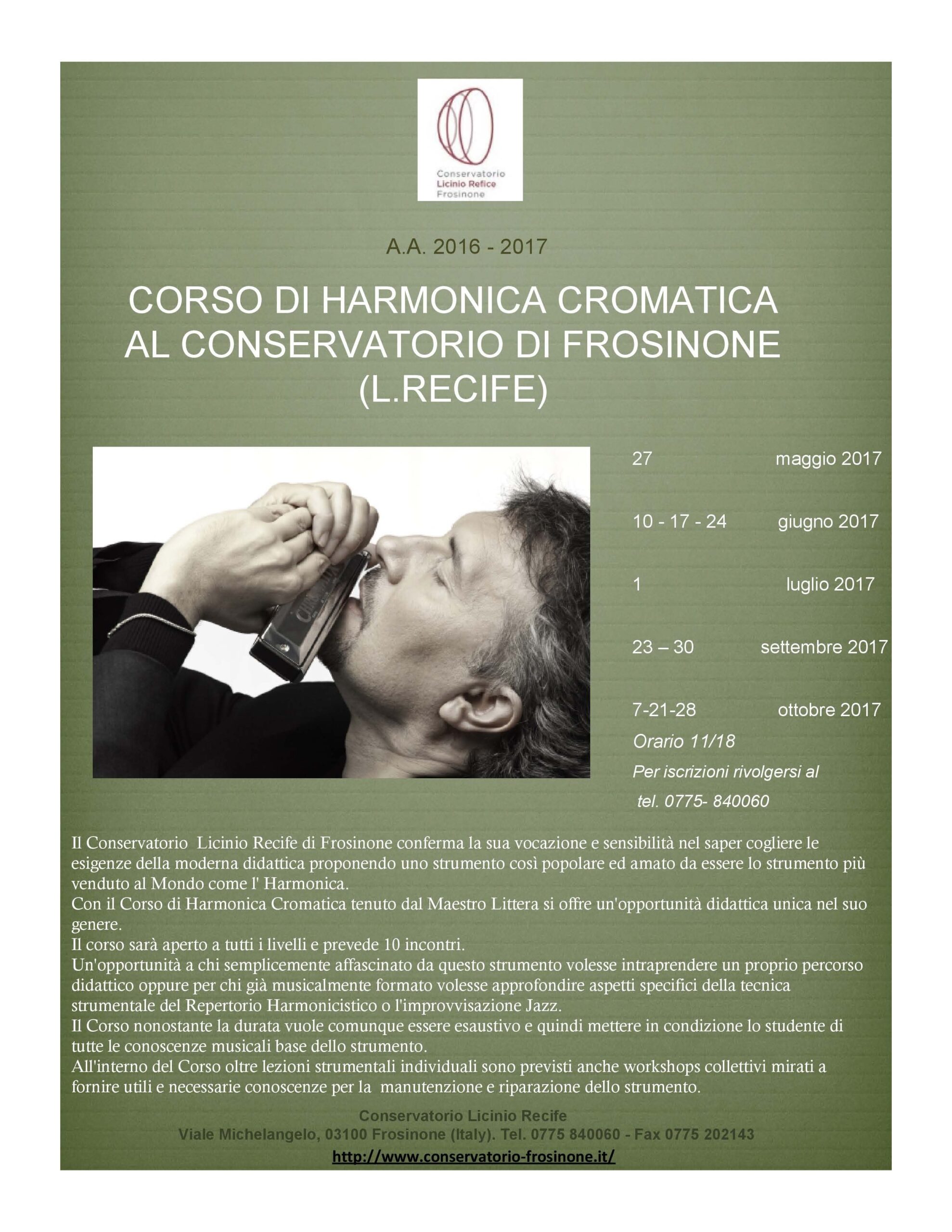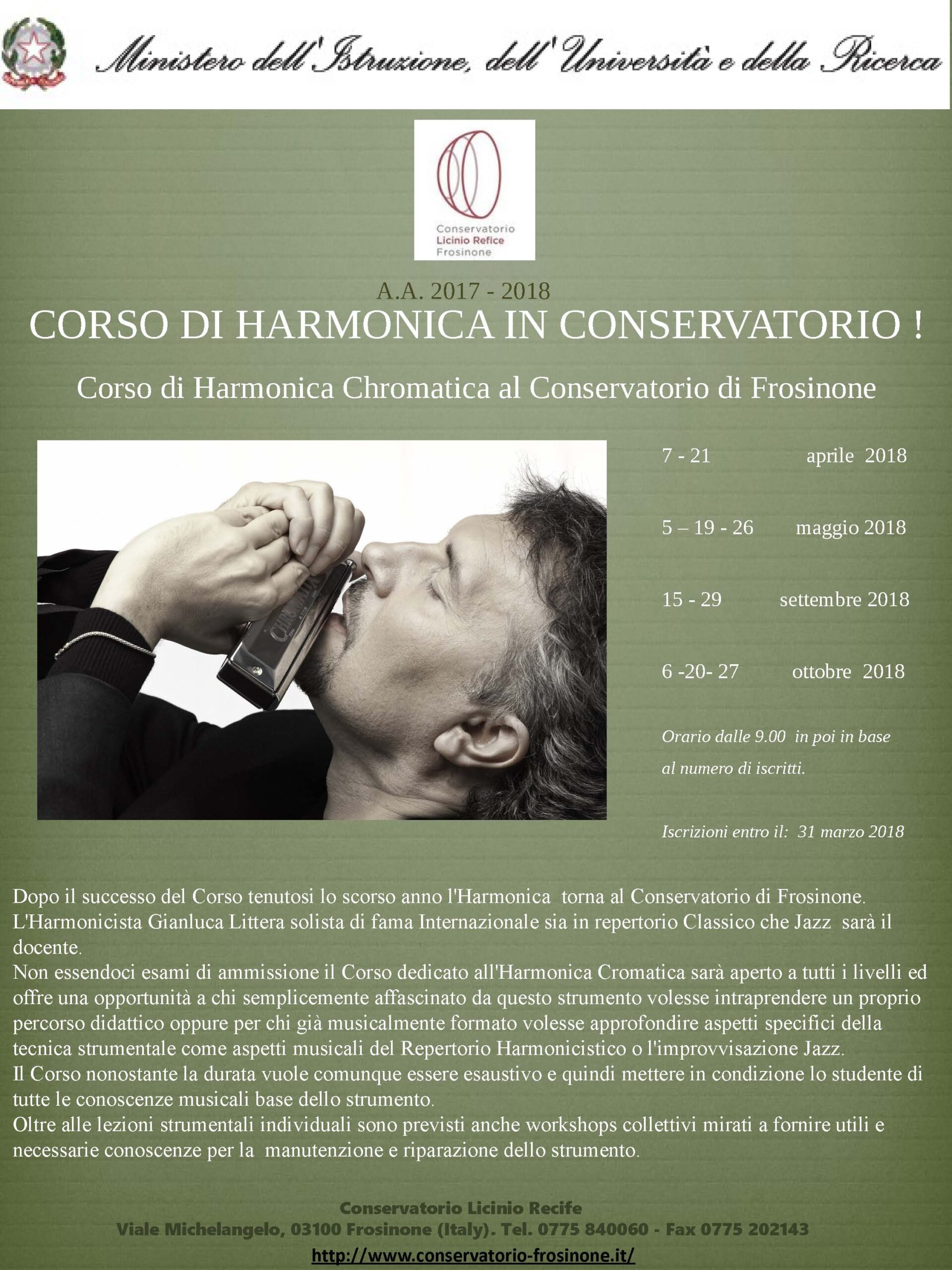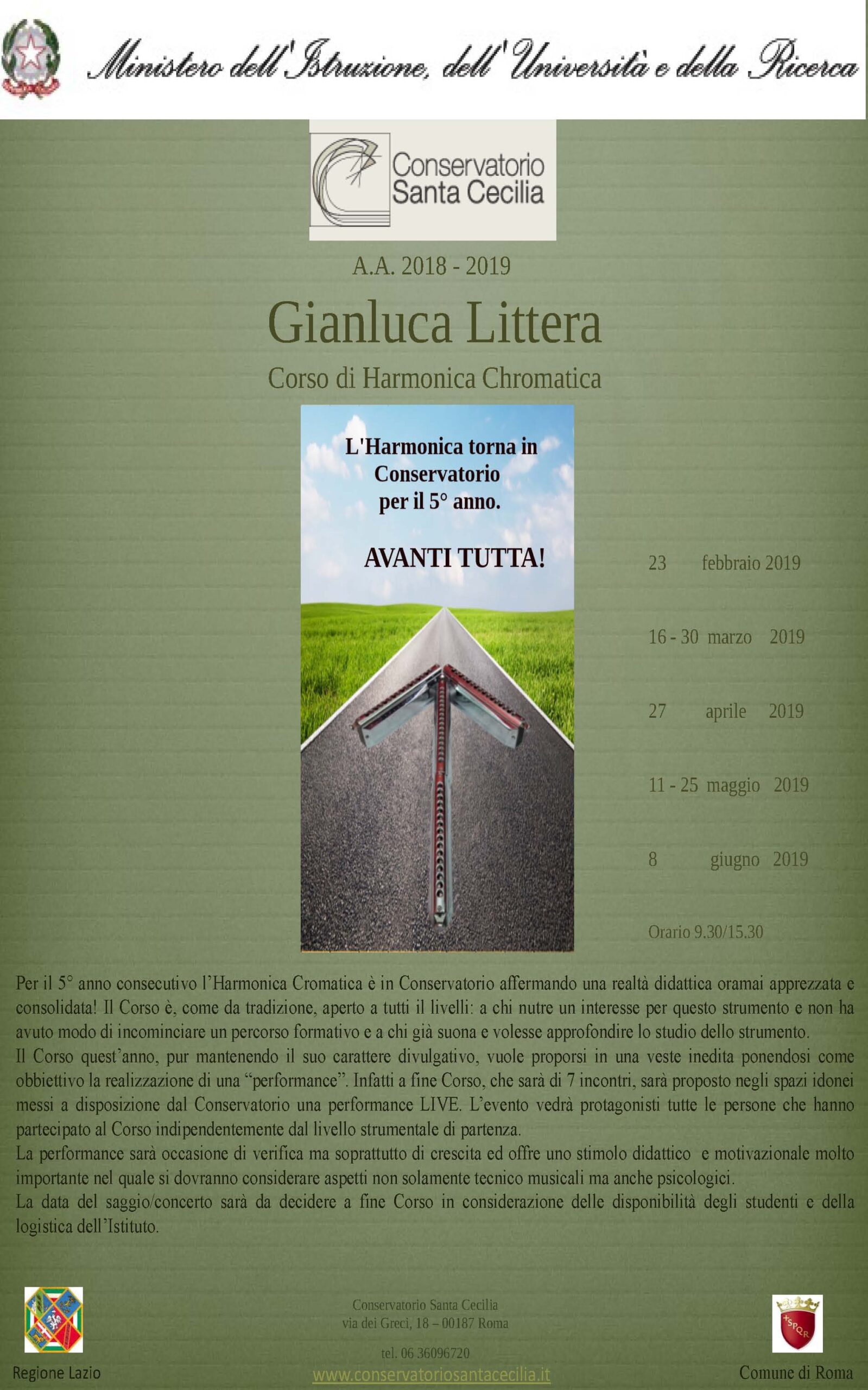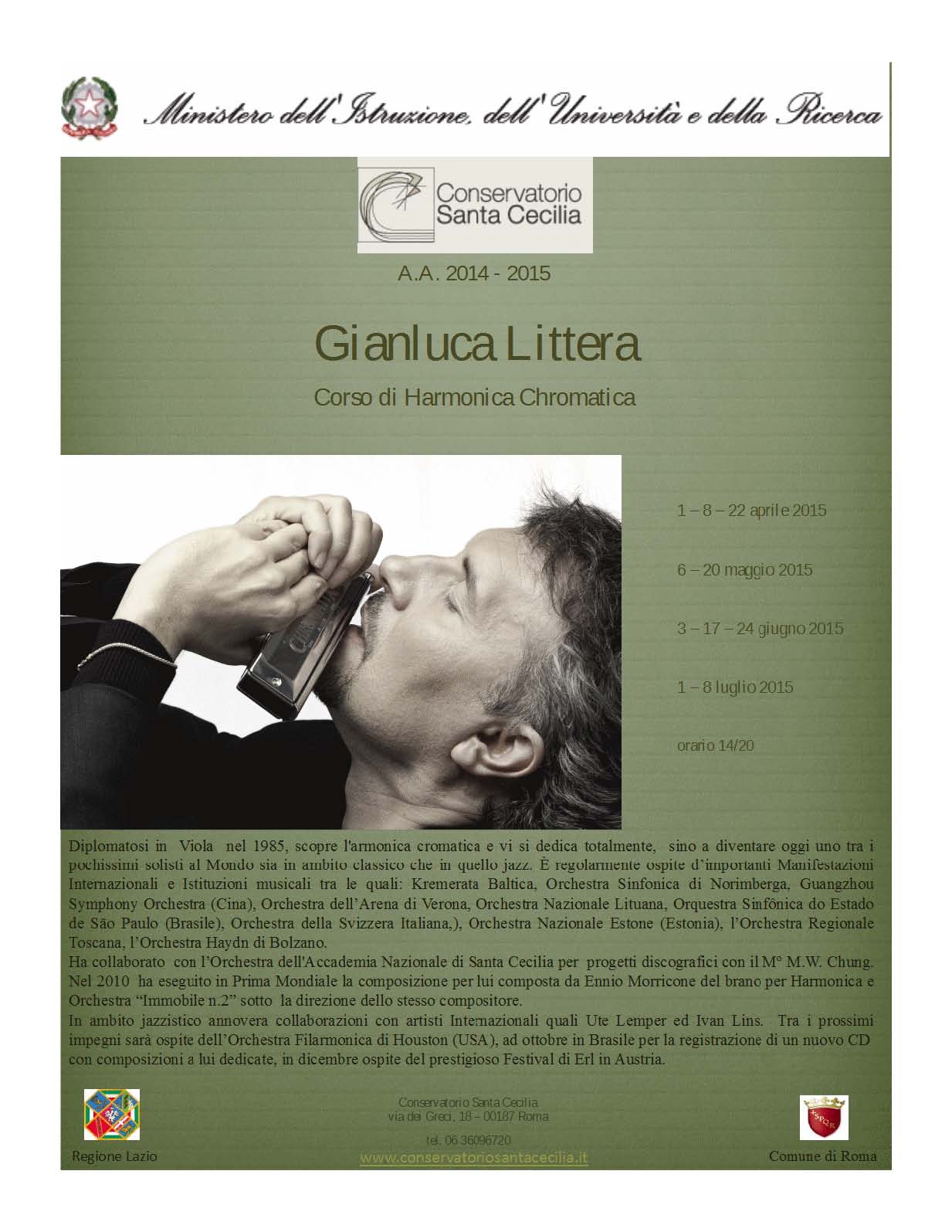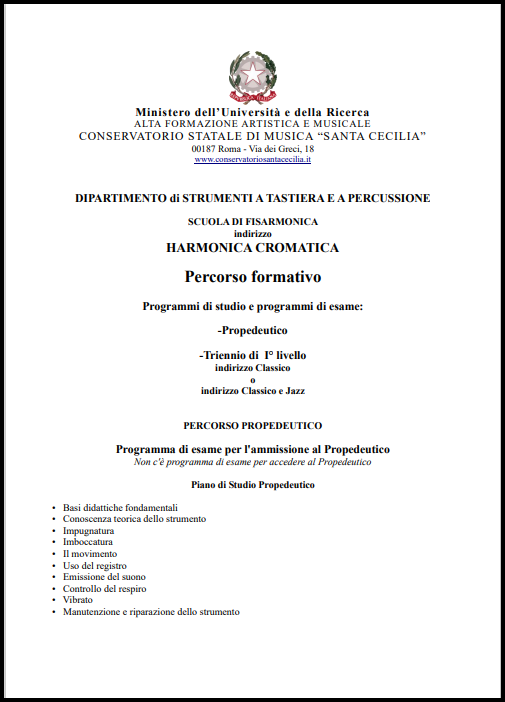Most musical instruments can be studied, and performances can be graded from beginners through to degree level. Unfortunately, the harmonica is not one of them. I have reviewed some previous attempts in a separate blog.
Recently I became aware of a new university degree course for the chromatic harmonica which has been developed by Gianluca Littera at the Conservatory of Santa Cecilia in Rome. This looks very impressive and much more comprehensive than anything else I have come across. I had the help of Gianandrea Pasquinelli as a translator to help my understanding of what Gianluca had done.
Gianluca was born in Rome in 1962 and gained his music degree in 1985 as a viola player. He worked and toured with many orchestras before embracing the chromatic harmonica after seeing Toots Thielemans on TV. His recording career started in 1996 and he has played with many symphony orchestras as well as forming his own jazz groups.
Gianluca organised free harmonica courses for six years before deciding to develop them further. He joined the Conservatory of Santa Cecilia in Rome as a lecturer in 2022 after successfully submitting the degree course for recognition by the Italian Ministry of Education.
You can read more about Gianluca Littera here.
What follows is in his own words.
The Creation of the Harmonica Degree Course.
The Free Course
I wanted to share what I had learned with other players, hoping that they would share the pleasure I experienced while playing the harmonica.
It was difficult to gain acceptance for the chromatic harmonica in a traditional Music College. Fortunately, I had a degree as a viola player and so I was accepted. This allowed me to introduce the harmonica, which was not even considered an instrument at that time.
I started with six years of free courses (2014-20) at Conservatories around Rome. These classes were a real success, attracting students and arousing a lot of curiosity and interest.
Students performed in concerts with musicians from other courses and also attended seminars on the physiology of breathing when playing wind instruments.
These activities were necessary to get full acceptance for the harmonica and the creation of the three-year Academic degree course (Triennio).
The Degree Course
The complete educational path lasts 8 years and leads to a degree (like a violin or a piano). A qualification recognized throughout Europe.
- the three-year Preparatory course followed by
- the three-year course (Triennium) and
- the two-year course (Biennium).
The Italian Ministry of Education has approved the three-year Preparatory course followed by the three-year course (Triennium) which leads to a degree. The next step will be the approval of the two-year course (Biennium) which would lead to a second degree or Masters.
I created the study plan, entrance exams, course work exams and graduation exams etc., based on those developed for other musical instruments, both in terms of duration and level of difficulty.
This residential course includes the different subjects and knowledge that the student must acquire. The harmonica is the topic. For the practical / technical part we mainly use my book “70 exercises for Chromatic Harmonica from basic to Intermediate / advanced level“ while for the workshops /lectures we use as a reference another text of mine “Theoretical and Practical Treatise for Chromatic Harmonica”.
In addition to the harmonica, some other topics are studied: solfeggio, the history of music, harmonic analysis, chamber music, choral singing, and knowledge of relevant legislation etc…
These skills combine to train, not only a harmonica player, but, more importantly, a musician with all the necessary tools to enter the professional world, and, if he wishes, to teach others.
The chromatic harmonica is one of the instruments which leads to a music degree.
Here are links to music to be studied and lectures for the three-year course (Triennium) for harmonica.
The current status of the course
There are 3 stages.
- The three-year Preparatory course can be accessed without an entrance exam.
- To access the three-year course (Triennium) it is necessary to pass an entrance exam and to know solfeggio (read music).
- To access the two-year course (Biennium), when it opens, it will be necessary to have completed a three-year degree course and an entrance exam with the harmonica.
These courses started in February 2022 and currently there are 12 students, distributed between the Preparatory and Triennium courses. Some come from outside Italy (France and Switzerland).
In October 2022, the students enrolled in the Preparatory path will prepare to take the entrance exam for the three-year course and the other students will make the transition from the 1st to the 2nd year of the three-year course.
The Future
One of the most rewarding aspects of teaching was discovering that it enriches not only the pupil but also the teacher. Furthermore, many of the pupils who were already playing when they entered the course had no idea what it meant to study in a conservatory. The opportunities offered to them have meant that their musical boundaries were enormously enriched, something that gives me, as a teacher, lots of satisfaction to see a student grow and develop.
In the future I foresee harmonica classes like mine in other Conservatories. I want to get the harmonica the recognition that has always been missing! Since 1992, when the accordion entered the Conservatory, no other instrument has since been recognized as such. I am happy to have succeeded first of all to give the harmonica the dignity it deserves, and also, to pass on at least some of what this instrument has given me which has enriched me musically and personally.
Finally, the harmonica now has an officially recognized course of workshops, lessons and lectures. In Italy we wrote a piece of the history of this instrument, and it was the piece that was missing. Perhaps we have not yet fully understood the scope of what we have achieved at the Santa Cecilia Conservatory.
I believe that other Institutes will take this result as an example and will do the same. At the Santa Cecilia Conservatory in Rome, we have opened and indicated the way. Everyone can access an educational path that provides the opportunity to register or take an exam according to their own level. Then advance from the Preparatory for those starting or the Triennium for those who already play and then the Biennium.
For more information you can contact me, Gianluca Littera
